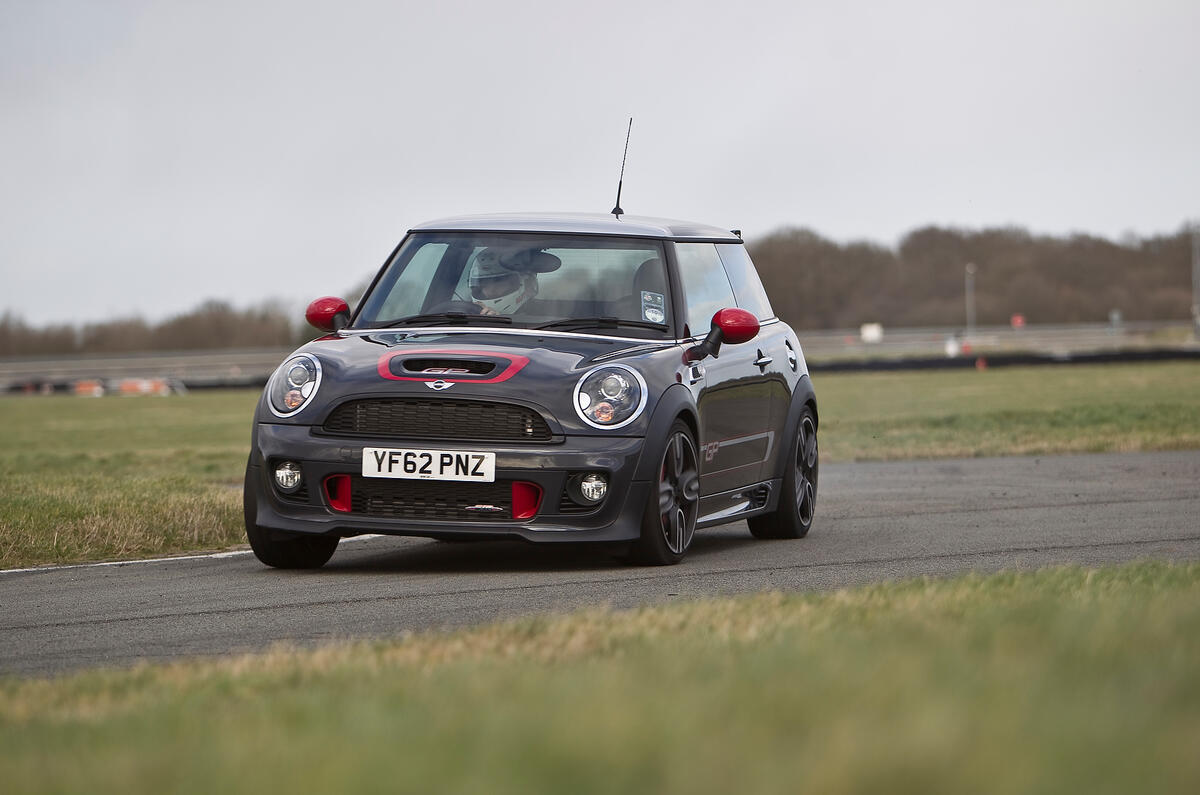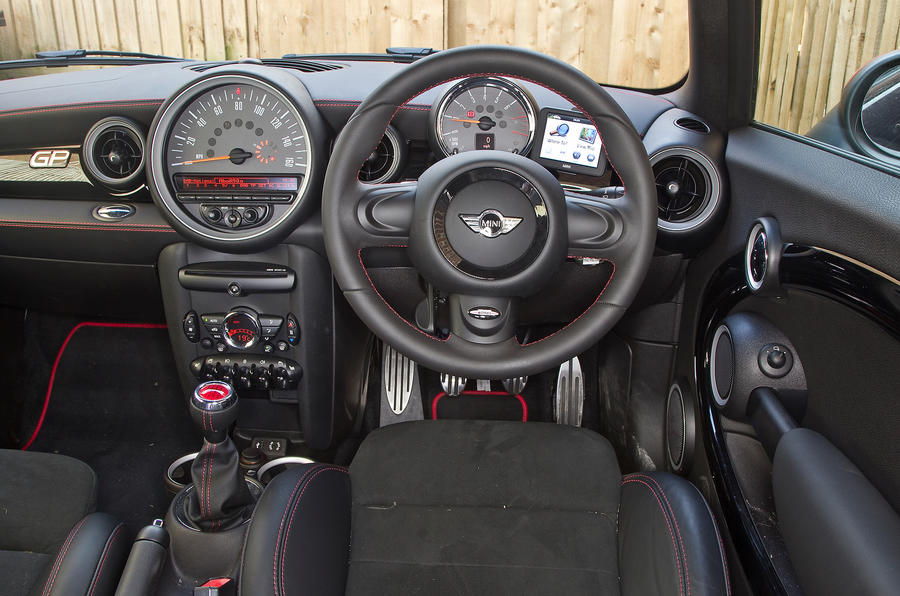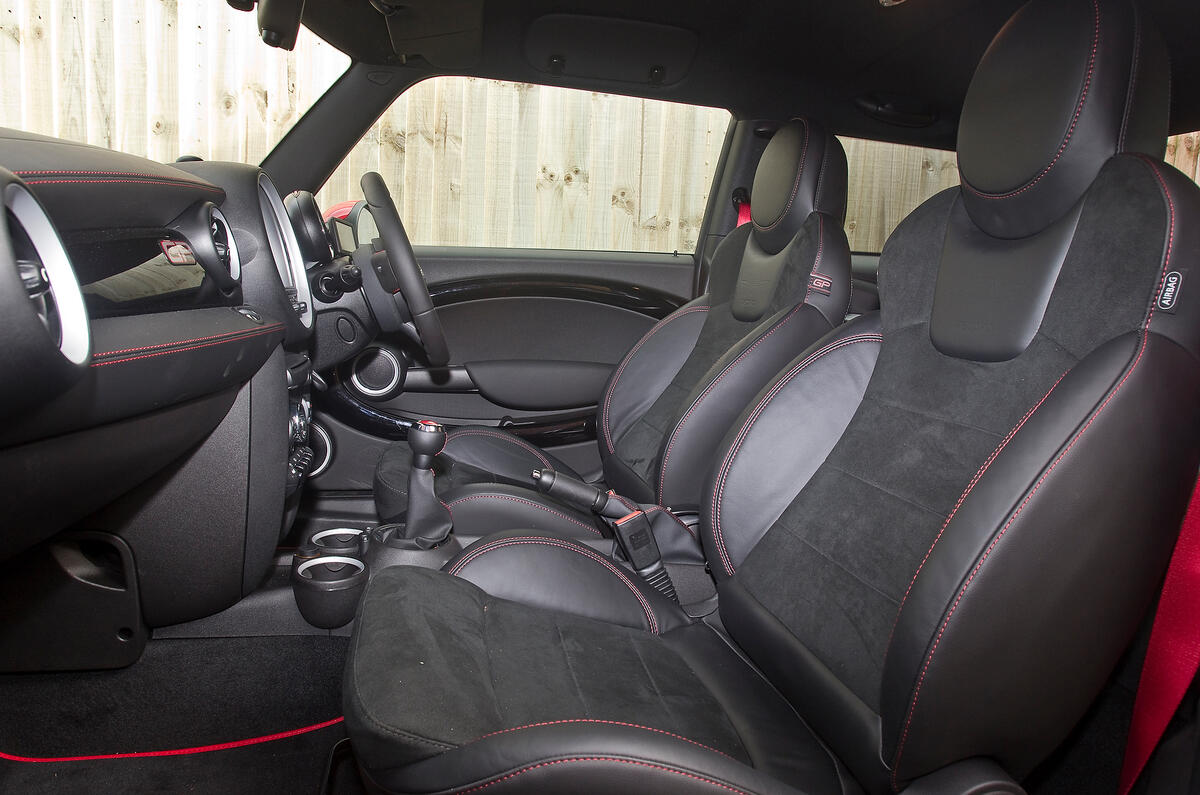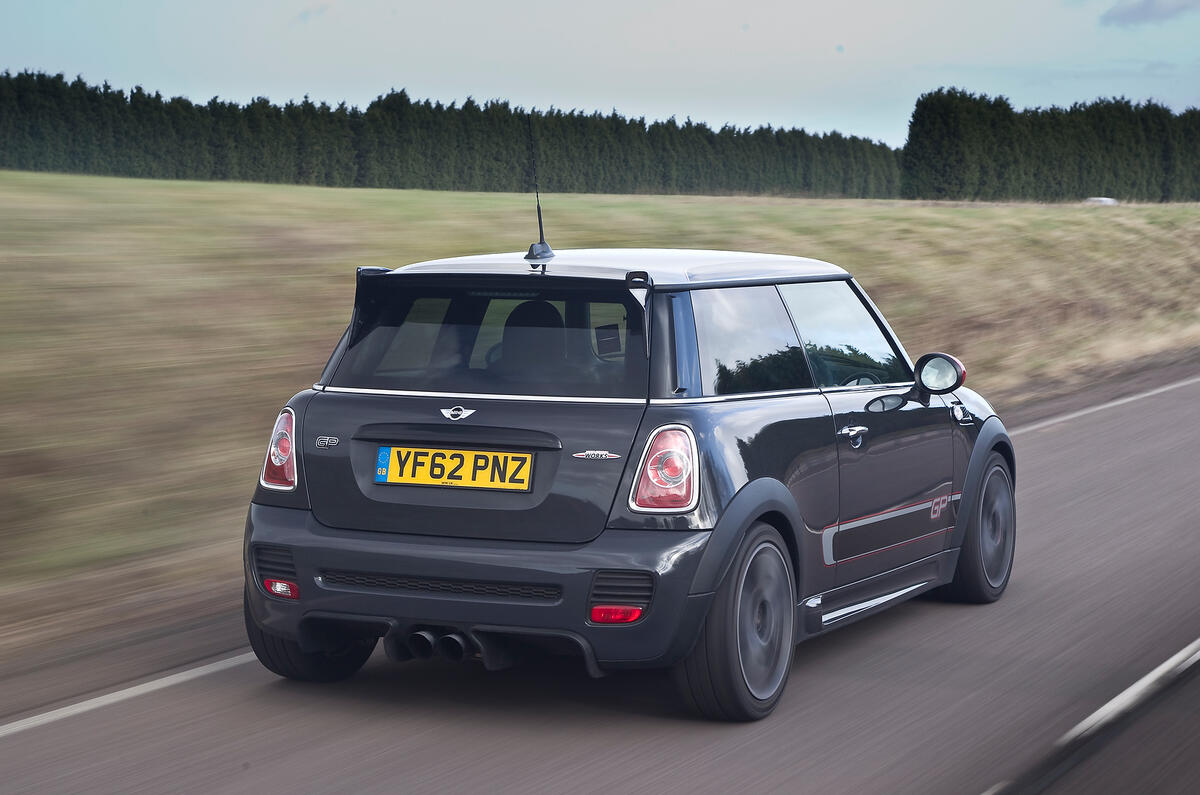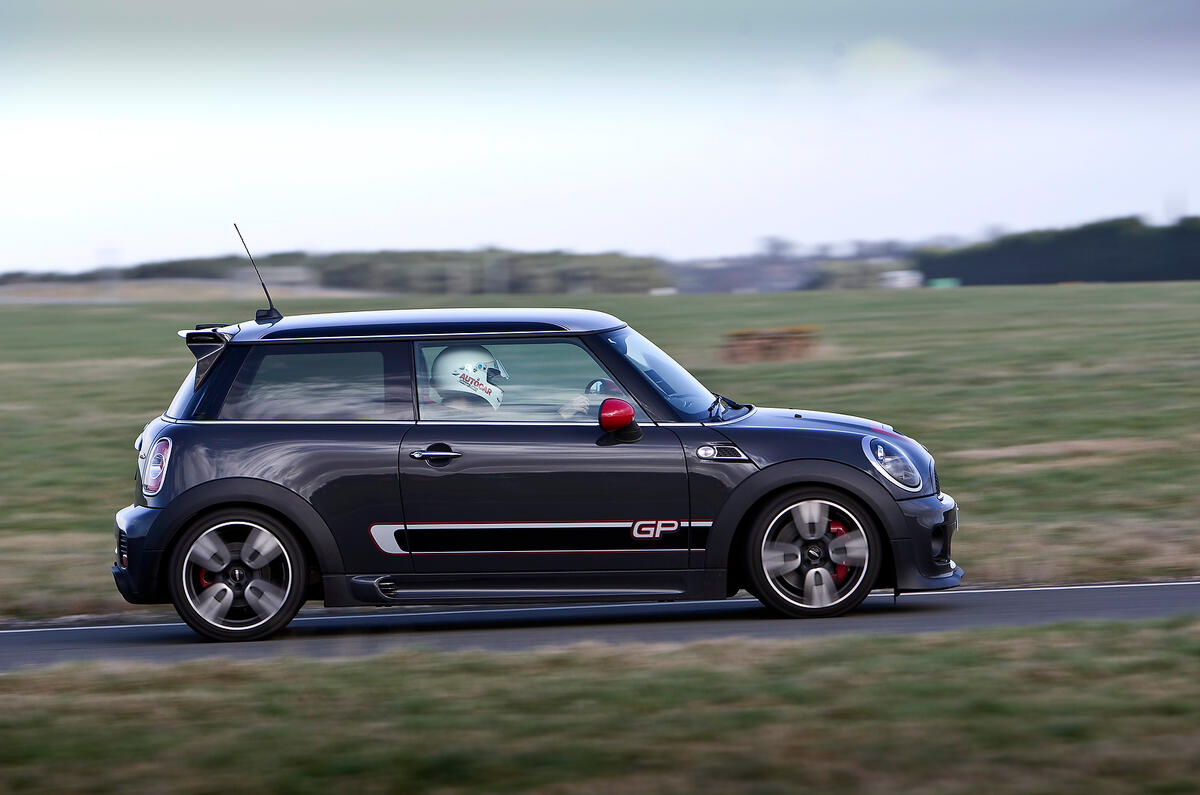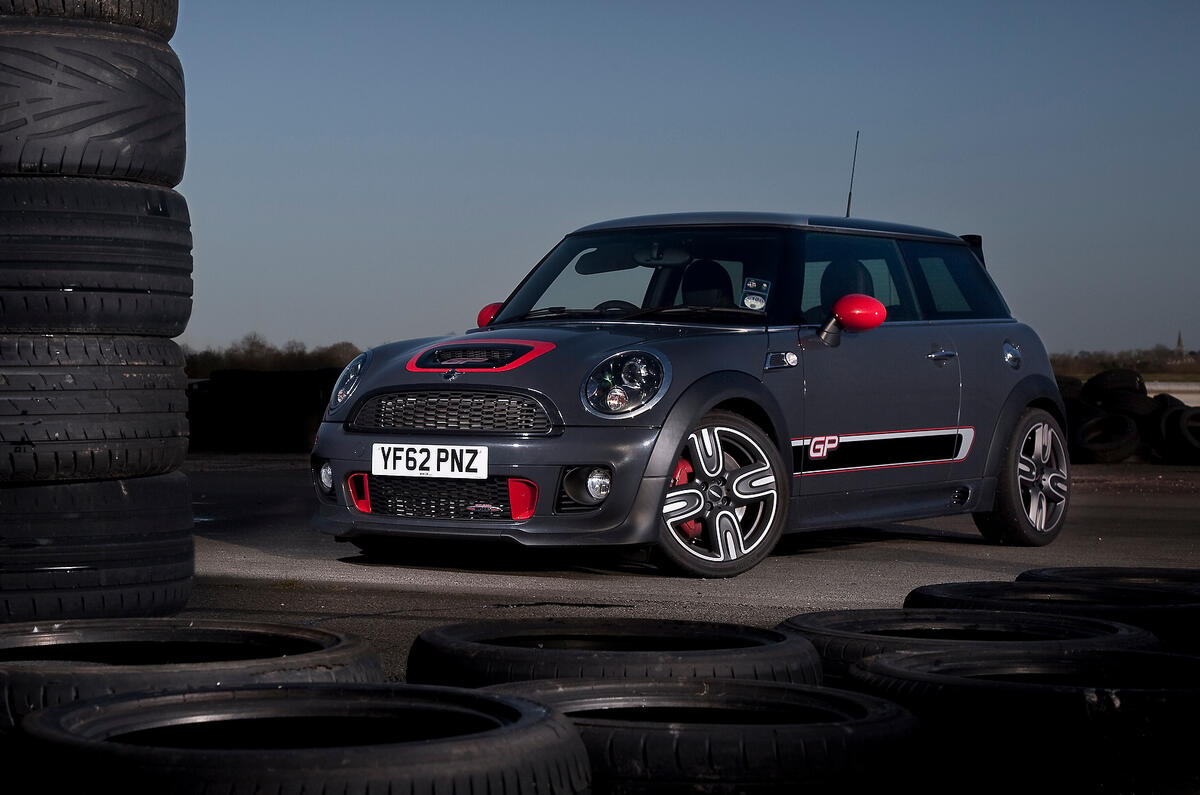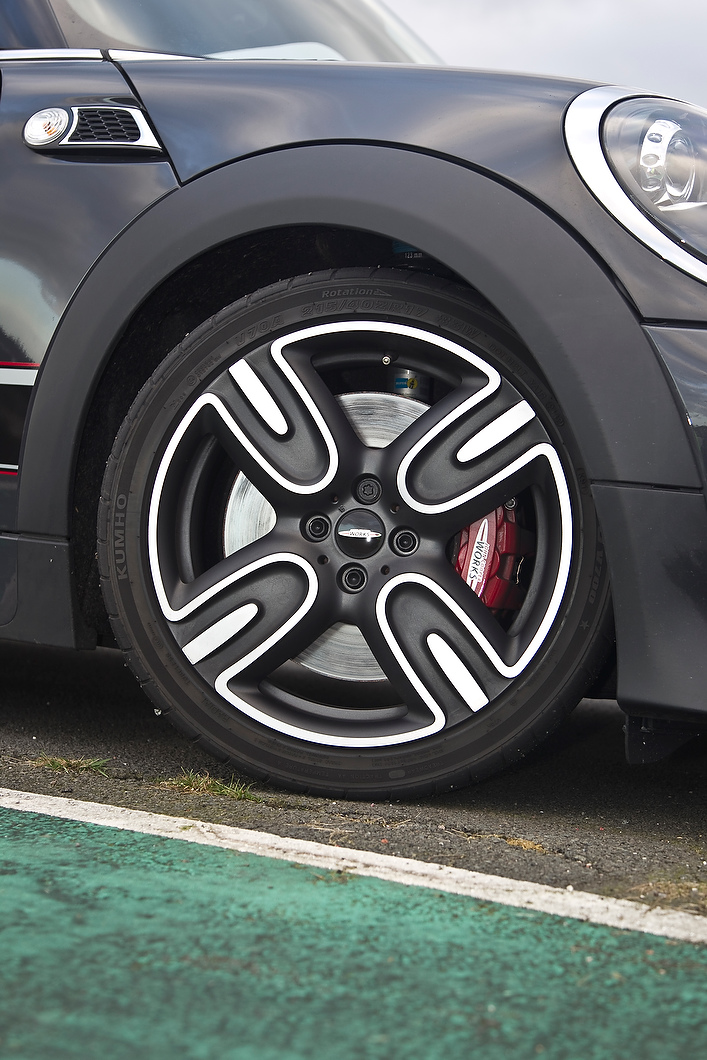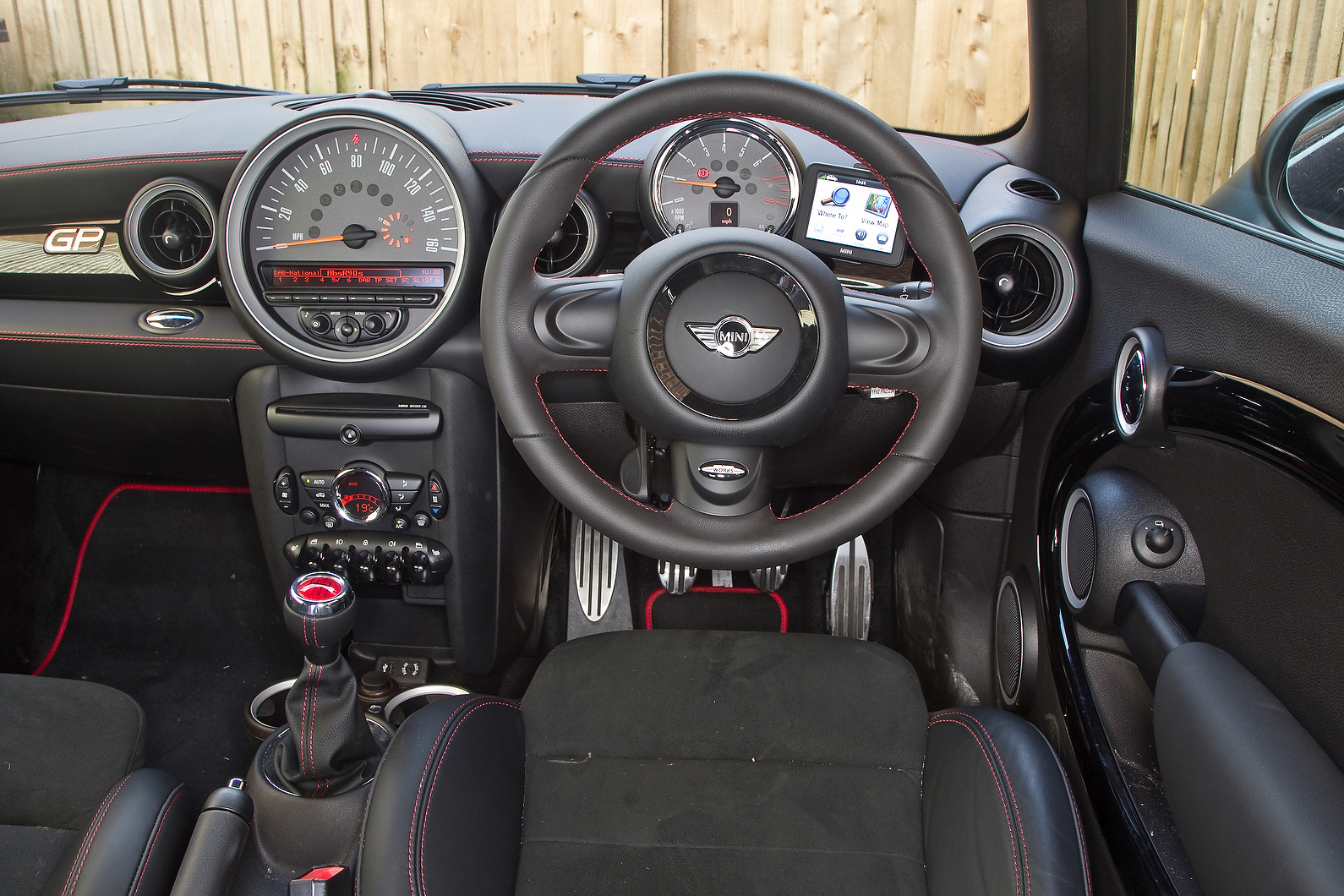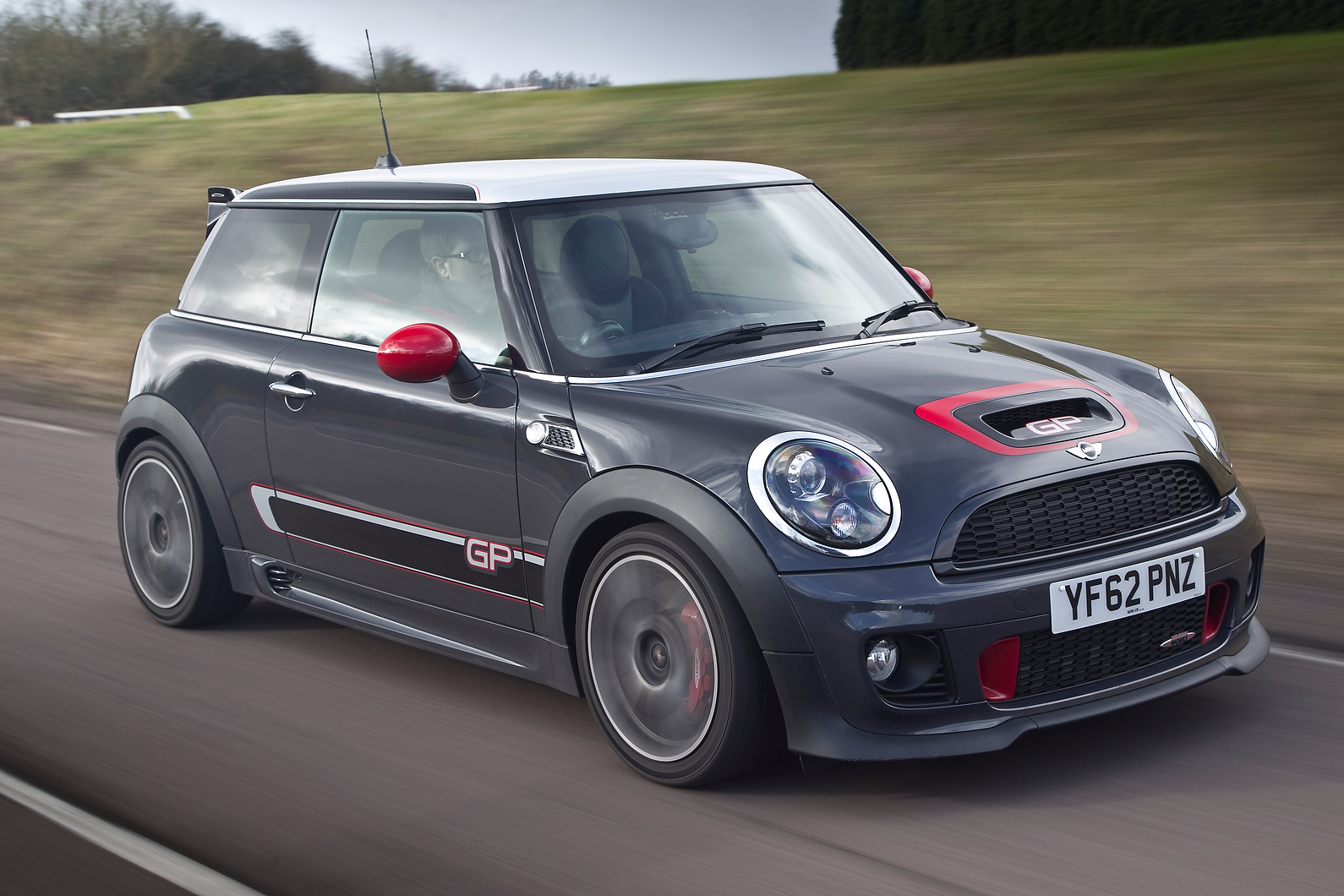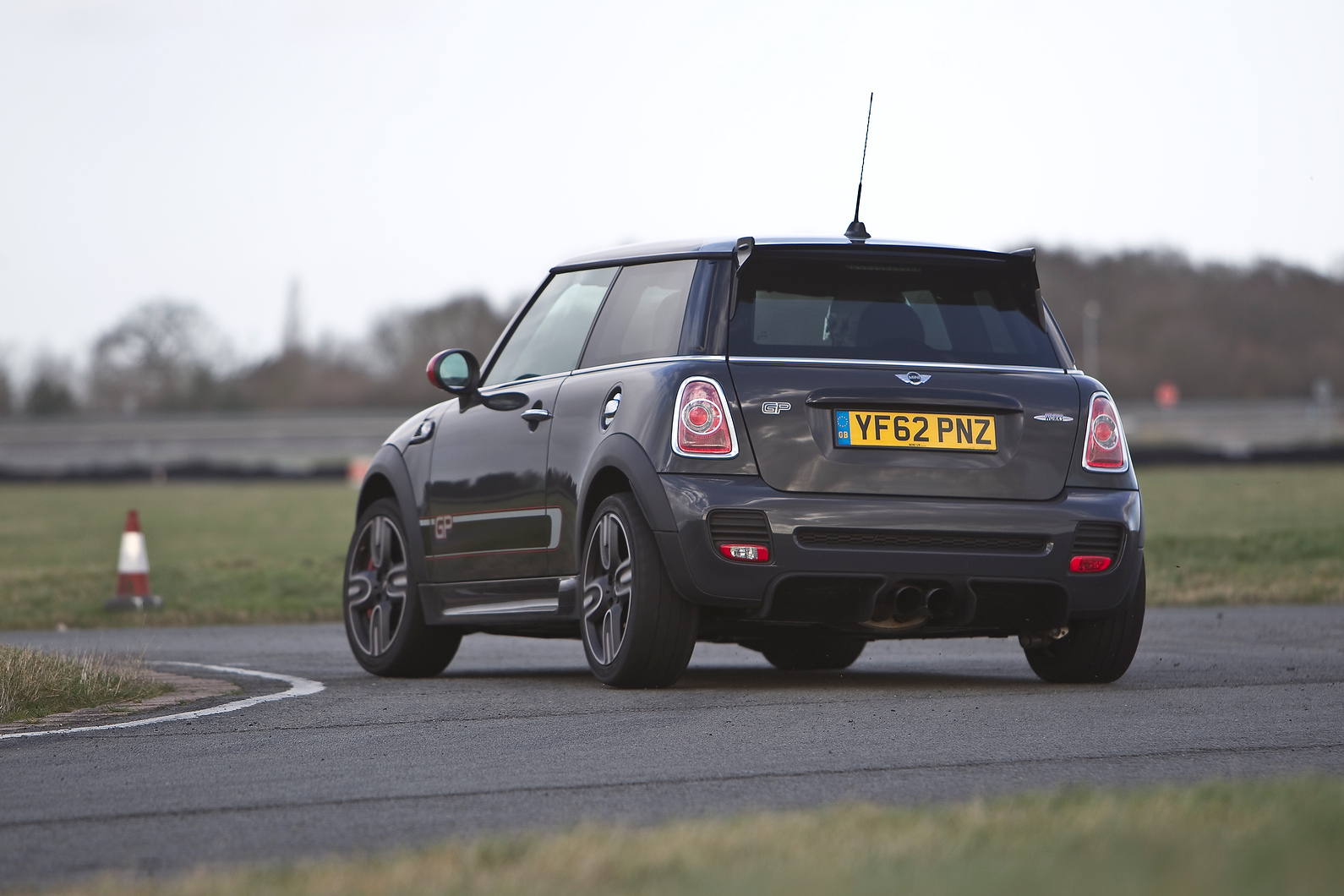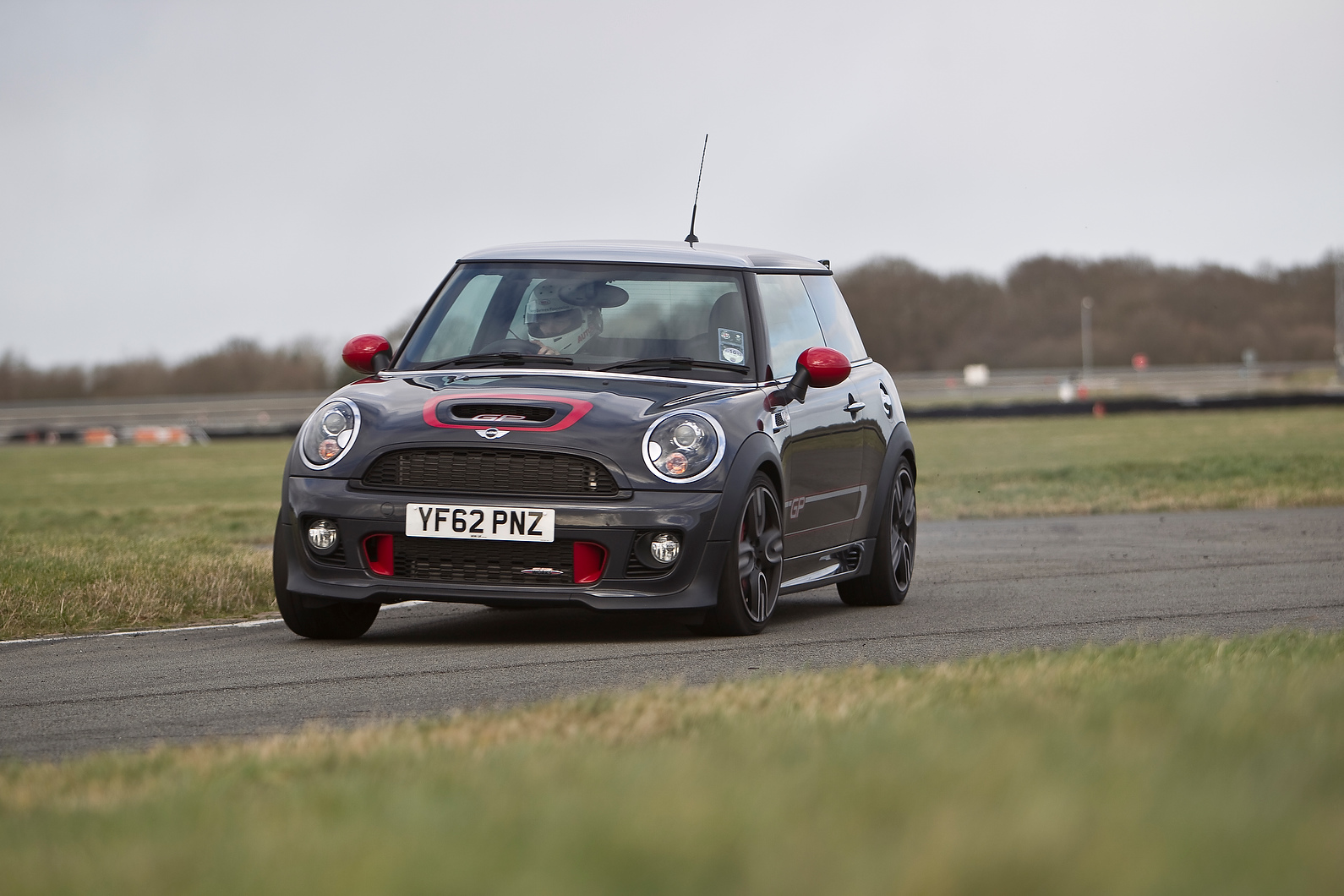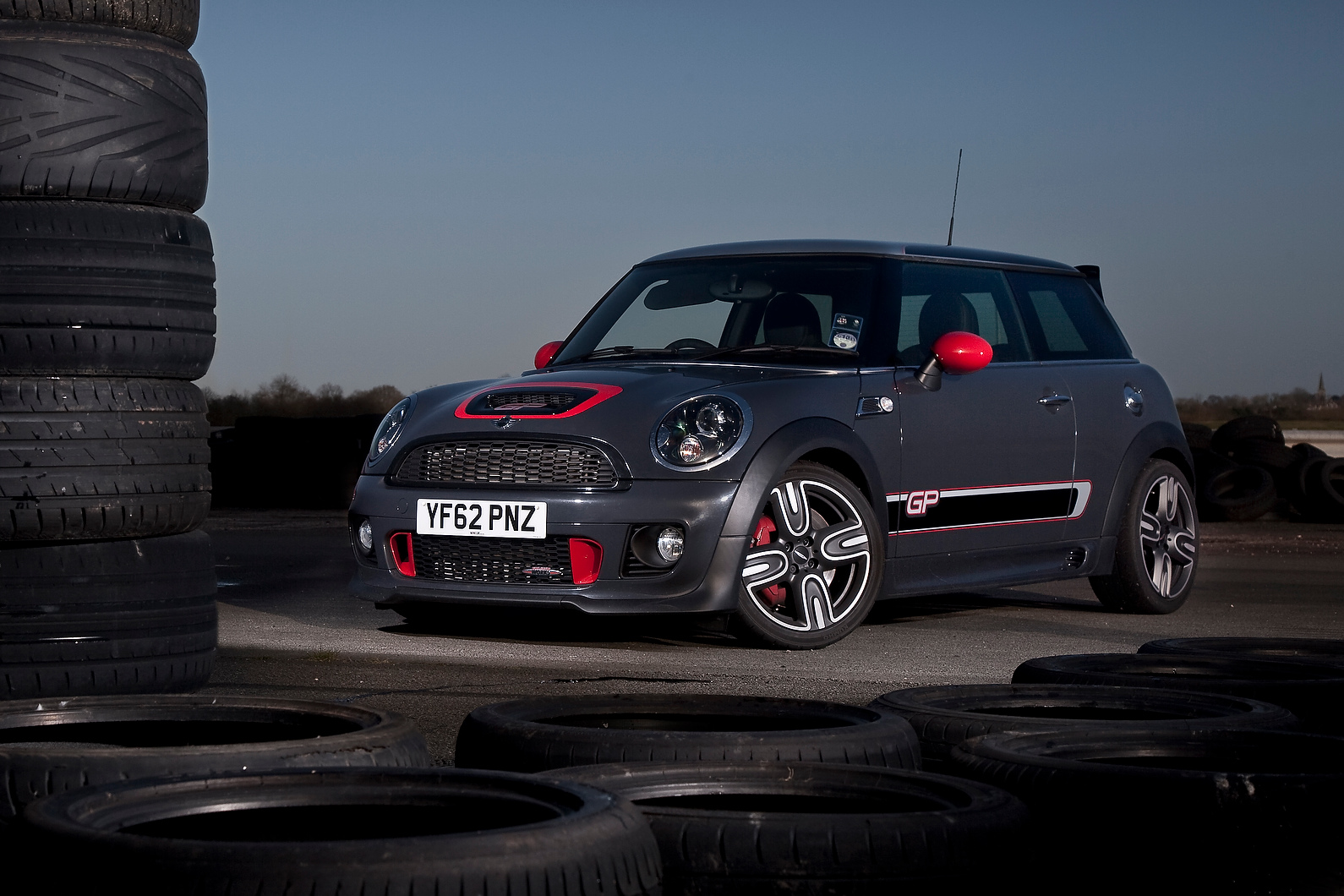As it ever was with BMW’s Mini, we’ve been here before. In 2006, just before the final run of first-generation cars shuffled down the Oxford production line, the manufacturer built 2000 Mini GP models.
On paper, it smacked a little of run-out frivolity – especially given the dramatic price rise that accompanied the car’s plunging ride height – but this was no range death rattle.
Thanks to a proper mechanical diff deployed (at last) to better harness an uprated 212bhp of supercharged shunt, the stripped-out GP turned out to be arguably the best Mini yet produced on BMW’s watch. Just 459 examples came to the UK, and those that remain roadworthy after seven years have settled into the rock-solid values indicative of cult status.
That makes the second album both inevitable and inevitably difficult. Nevertheless, BMW appears to have set about its task with at least as much enthusiasm as last time. The latest GP – also likely to be among the last of its kind – gets properly trick suspension to go with a number of other bespoke modifications.
The second-generation model is no less a specialist machine, and one that's built for the Mini enthusiast. Inside you'll see bracing where the rear seats aren't, a deluge of GP stickers and badges, quirky wheel designs - derived from those fitted to Mini Challenge race cars - and an aero kit that actually makes a difference at speed.


